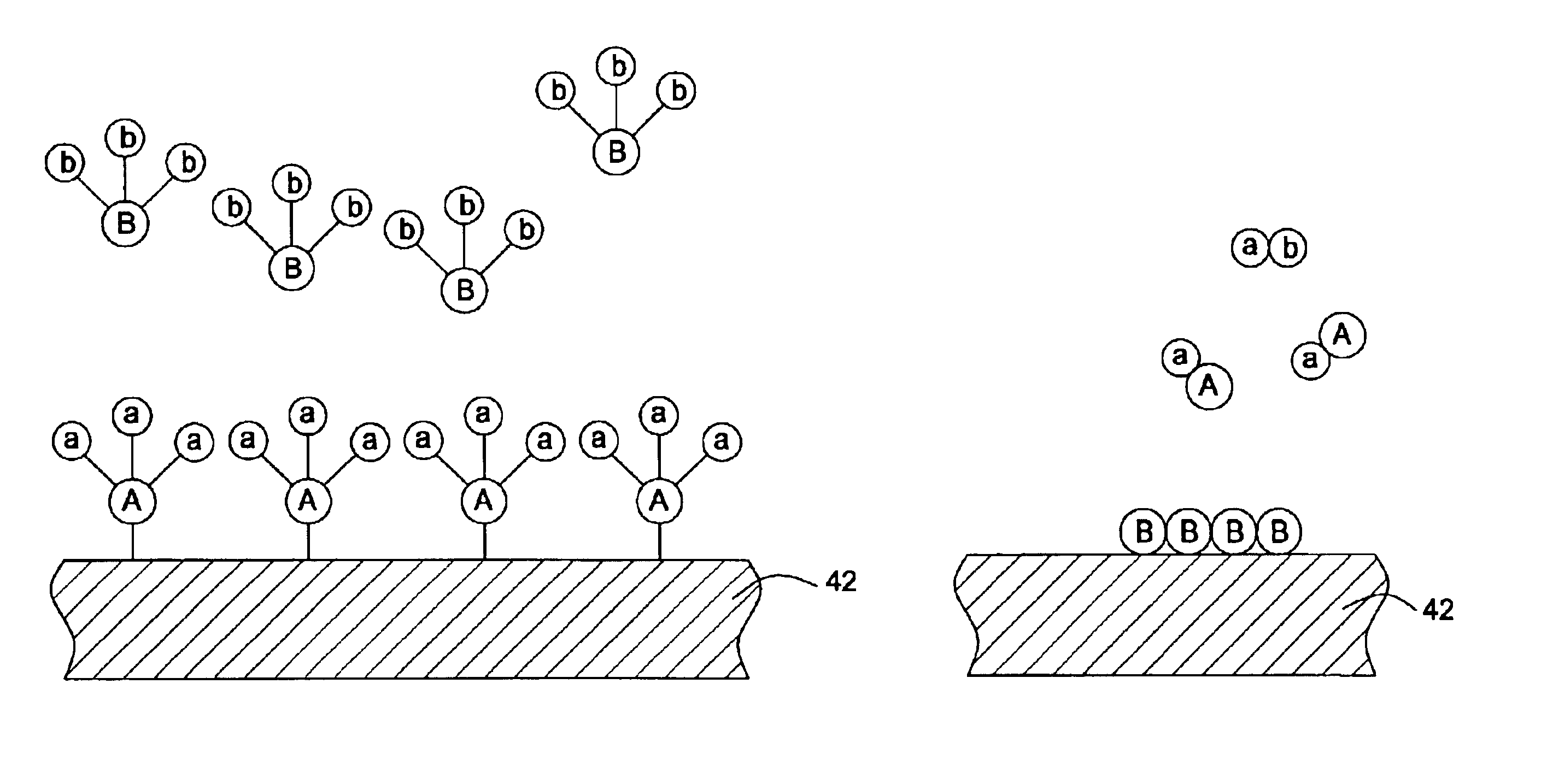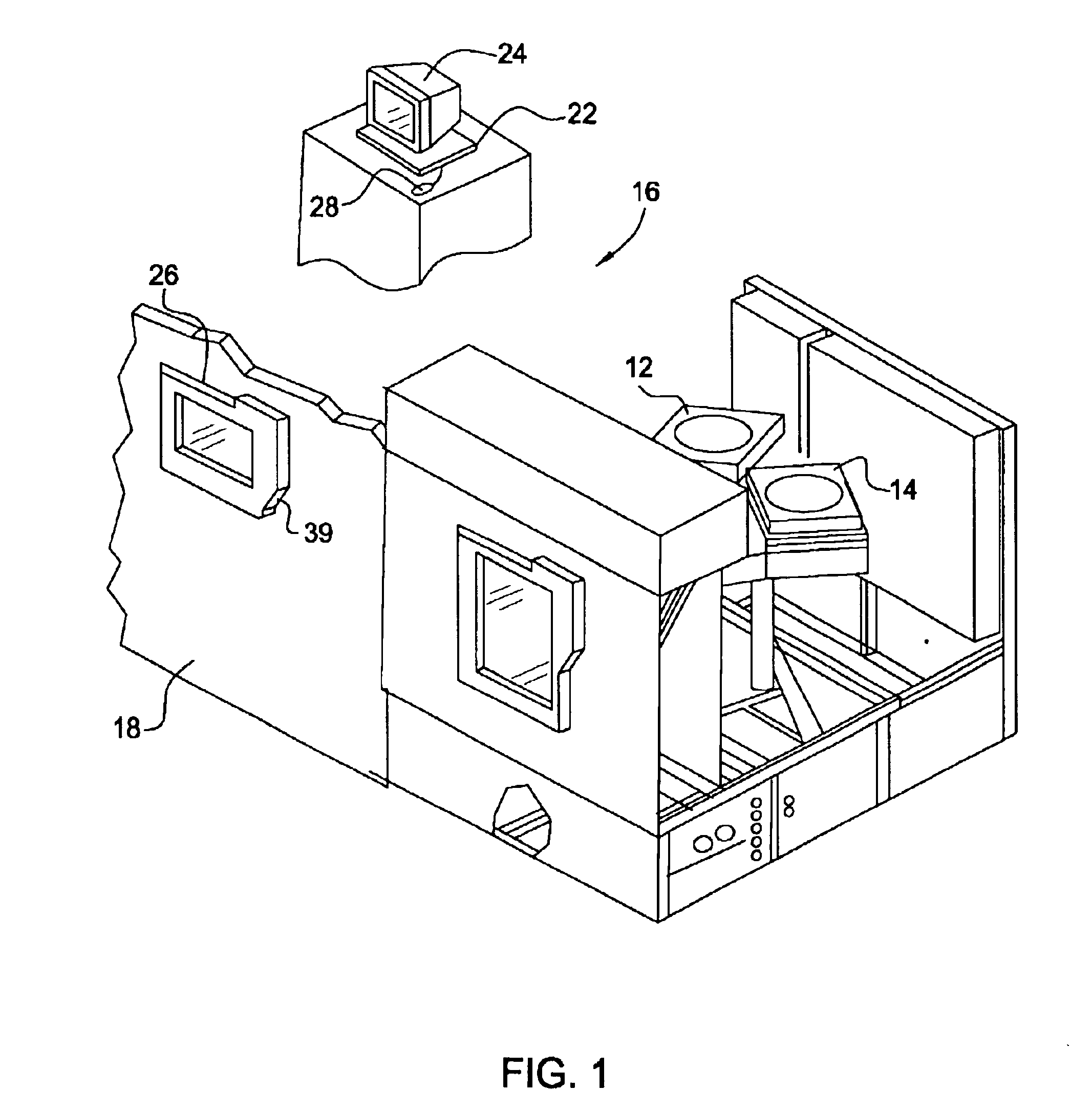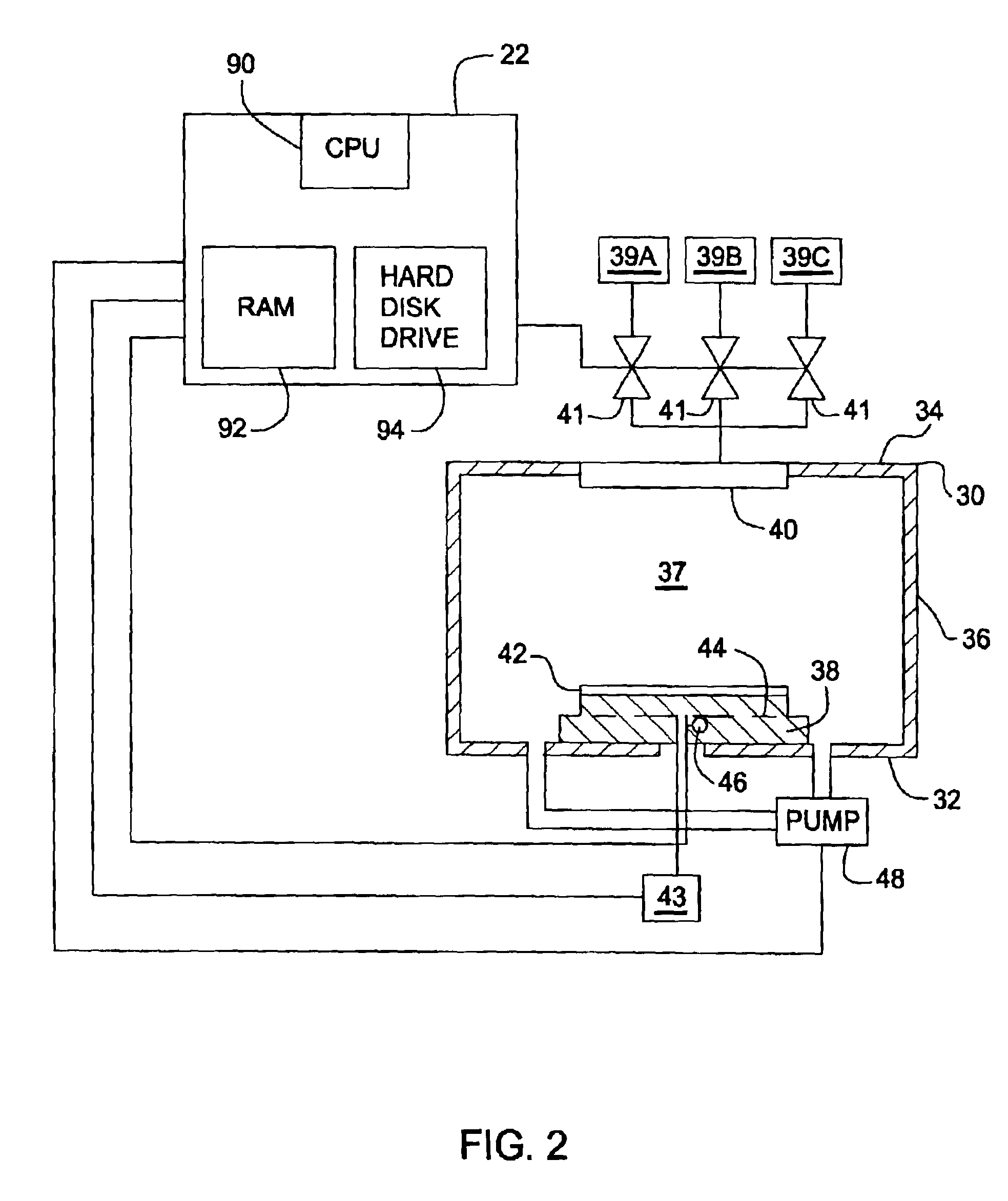Method and apparatus for depositing tungsten after surface treatment to improve film characteristics
a technology of surface treatment and tungsten, which is applied in the direction of chemical vapor deposition coating, solid-state devices, coatings, etc., can solve the problems of reducing the deposition rate of tungsten by at least one order of magnitude, the need for more complex chamber design and gas flow techniques, and the difficulty of traditional cvd methods for depositing tungsten, etc., to improve the surface mobility of adsorption chemical species, improve the step coverage and resistivity of the tungs
- Summary
- Abstract
- Description
- Claims
- Application Information
AI Technical Summary
Benefits of technology
Problems solved by technology
Method used
Image
Examples
Embodiment Construction
[0031]Referring to FIG. 1, an exemplary wafer processing system includes one or more processing chambers 12 and 14 disposed in a common work area 16 surrounded by a wall 18. Processing chambers 12 and 14 are in data communication with a controller 22 that is connected to one or more monitors, shown as 24 and 26. The monitors typically display common information concerning the process associated with processing chambers 12 and 14. One of the monitors 26 is mounted on wall 18, with the remaining monitor 24 being disposed in work area 16. Operational control of processing chambers 12 and 14 may be achieved by the use of a light pen, associated with one of the monitors 24 and 26, to communicate with controller 22. For example, light pen 28 is associated with monitor 24 and facilitates communication with controller 22 through monitor 24. Light pen 39 facilitates communication with controller 22 through monitor 26.
[0032]Referring both to FIGS. 1 and 2, each of processing chambers 12 and 1...
PUM
 Login to View More
Login to View More Abstract
Description
Claims
Application Information
 Login to View More
Login to View More - R&D
- Intellectual Property
- Life Sciences
- Materials
- Tech Scout
- Unparalleled Data Quality
- Higher Quality Content
- 60% Fewer Hallucinations
Browse by: Latest US Patents, China's latest patents, Technical Efficacy Thesaurus, Application Domain, Technology Topic, Popular Technical Reports.
© 2025 PatSnap. All rights reserved.Legal|Privacy policy|Modern Slavery Act Transparency Statement|Sitemap|About US| Contact US: help@patsnap.com



